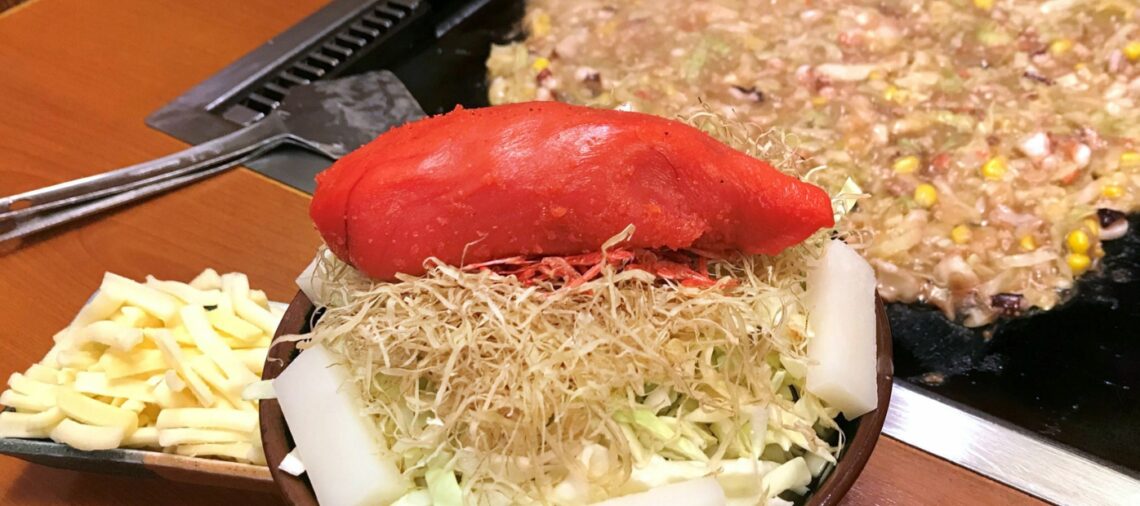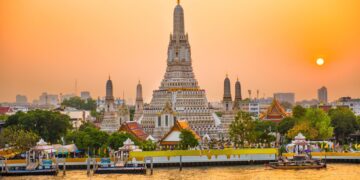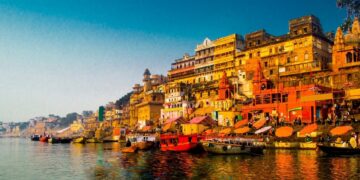Tsukishima Monja Street is a popular destination in Tokyo, Japan. Located in the Tsukishima neighborhood, (an area in central Tokyo, practically an artificial island on Tokyo Bay, along Sumida river) this street is renowned for its delicious monjayaki, a type of Japanese pancake. With its unique atmosphere and wide variety of monjayaki restaurants, Tsukishima Monja Street offers visitors a chance to explore and indulge in this iconic Tokyo culinary experience. The street can be reached from Tsukishima Street Exit 7. But let’s find out what is monjayaki and how to explore Tsukishima Monja Street.
History and Origins of Tsukishima Monja Street in Tokyo
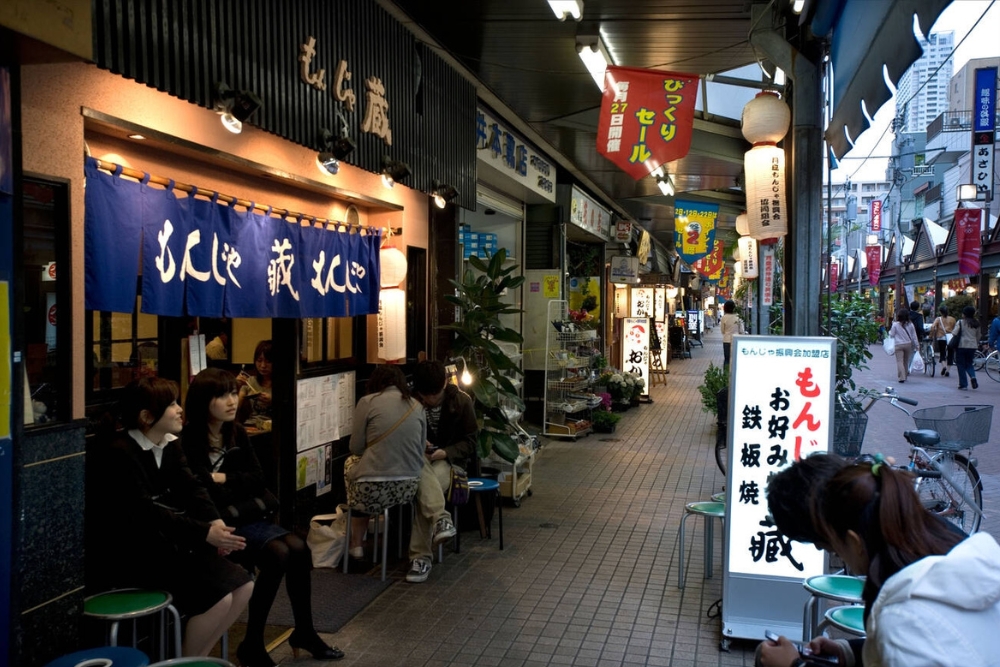
Tokyo is a city that always amazes with its vibrant neighborhoods and unique culinary experiences. One such neighborhood that stands out is Tsukishima, home to the iconic Monja Street. This bustling street is a food lover’s paradise, offering a taste of history and culture through its delicious monjayaki dishes.
To truly appreciate the significance of Tsukishima Monja Street, it’s important to delve into its history and origins. The story begins in the early 20th century when Tsukishima was a small fishing village. Back then, the locals would gather around the Tsukishima Shrine to celebrate festivals and enjoy traditional street food.
As time passed, the popularity of monjayaki, a type of Japanese pancake, started to grow. It was during the post-World War II era that monjayaki became a staple in Tsukishima’s culinary scene. The locals, known for their resourcefulness, began experimenting with different ingredients and cooking techniques to create their own unique version of monjayaki.
The birth of Tsukishima Monja Street can be traced back to the 1950s when a group of passionate monjayaki enthusiasts decided to open small restaurants along Nishinaka Street. This marked the beginning of a culinary revolution that would put Tsukishima on the map as the go-to destination for monjayaki lovers.
Today, Tsukishima Monja Street is a vibrant and lively hub with over 80 monjayaki restaurants. As you stroll down the street, you’ll be greeted by the enticing aromas of sizzling monjayaki cooked on hot iron plates. The sight of skilled chefs flipping and mixing the ingredients with precision is a spectacle in itself.
Each restaurant on Tsukishima Monjayaki Street has its own unique twist on the classic dish. Some offer traditional flavors, while others experiment with modern ingredients and fusion cuisines. Regardless of your preference, you can find a monjayaki that suits your taste buds.
One of the highlights of Tsukishima Monja Street is its interactive dining experience. Unlike traditional restaurants, monjayaki is cooked right at your table. You’re given a small spatula to mix the ingredients, creating a gooey and delicious concoction. It’s a fun and engaging way to enjoy a meal with friends or family.
Beyond the culinary delights, Tsukishima Monja Street also offers a glimpse into the local culture. The narrow streets are adorned with traditional lanterns and decorative signs, creating a nostalgic atmosphere. The friendly locals are always ready to share stories and recommendations, making your visit even more memorable.
What Is Monjayaki
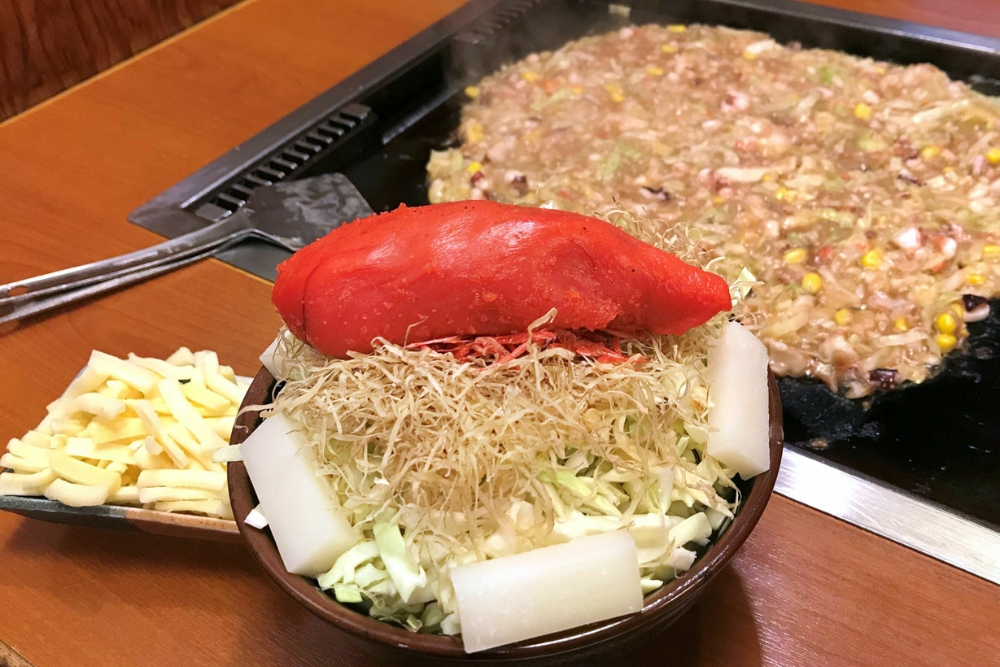
Monjayaki is a beloved traditional Japanese dish that originated in Tokyo. It is a type of savory pancake made with a batter consisting of flour, water, and often dashi (a Japanese soup stock). The batter is mixed with various ingredients such as cabbage, seafood, meat, or vegetables, creating a unique and flavorful combination. Unlike its more popular cousin, okonomiyaki, monjayaki has a thinner and runnier consistency, allowing it to be cooked on a hot iron plate or griddle in a liquid form.
The cooking process of monjayaki is an interactive and social experience. Once the batter and ingredients are mixed together, they are poured onto the hot plate in the shape of small circular portions. As the mixture sizzles and cooks, it is then skillfully manipulated using small metal spatulas by the diners themselves. The goal is to scrape and mix the ingredients together, creating a gooey and sticky texture. This interactive cooking style adds an element of fun and camaraderie to the dining experience as friends and family gather around the hot plate, laughing and enjoying the process together.
Monjayaki is often enjoyed as a casual meal or a snack, perfect for sharing with a group of friends. It is typically served with small spatulas and eaten directly from the hot plate. The dish is not only delicious but also a representation of Japan’s vibrant street food culture. With its unique texture, diverse ingredient options, and interactive cooking style, monjayaki offers a delightful and memorable culinary experience for both locals and visitors alike.
Insider Tips for Navigating Tsukishima Monja Street Like a Local
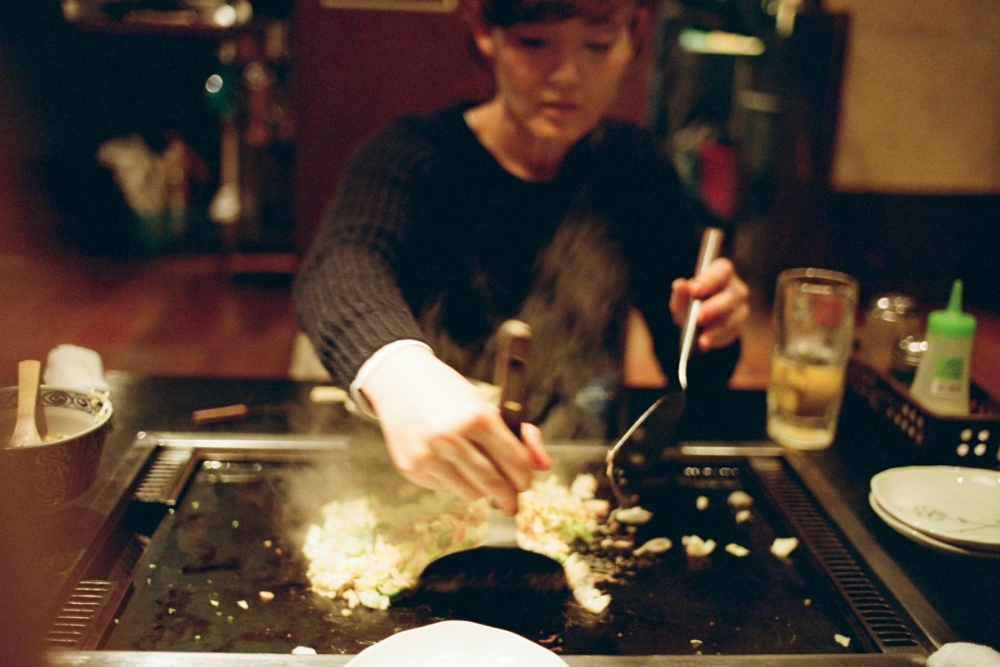
As you step onto Monja Street, you’ll be greeted by a lively atmosphere and the tantalizing aroma of sizzling monjayaki. To truly experience Tsukishima like a local, it’s important to know a few insider tips. First and foremost, be prepared to wait. Monja Street is a popular destination for both locals and tourists alike, so it’s not uncommon to find long queues outside the most popular restaurants. But don’t let that discourage you! The wait is well worth it, and it gives you a chance to soak in the vibrant atmosphere of the street.
Once seated at a restaurant, it’s time to dive into the world of monjayaki. The menu might initially seem overwhelming, with a wide variety of toppings and flavors to choose from. But fear not; the friendly staff are always ready to help you navigate the options. If you’re feeling adventurous, try the classic seafood monjayaki, a local favorite. For those with a sweet tooth, there are even dessert monjayaki options available.
As you indulge in your monjayaki feast, take a moment to observe the locals around you. You’ll notice that they have a unique way of eating this dish. Instead of chopsticks, they use small metal spatulas to scoop up the monjayaki from the hot plate. Follow their lead and embrace the local customs – it’s all part of the experience.
Must-Visit Attractions and Landmarks near Tsukishima Monja Street
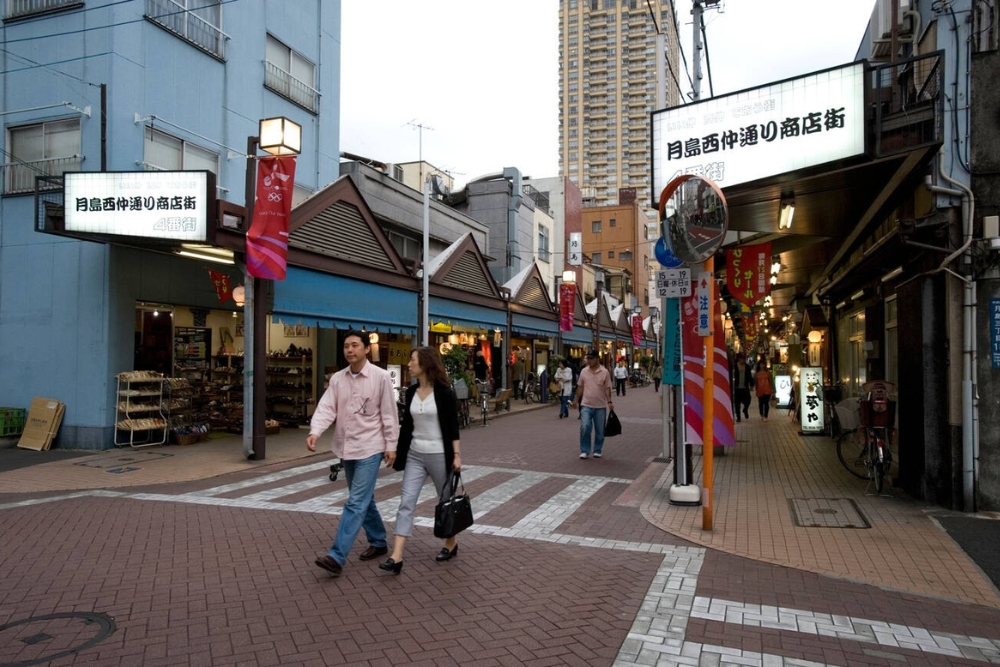
As we said before, one of the highlights of Tsukishima Monja Street is the opportunity to make your own monjayaki. Many restaurants provide customers with a hot grill right at their table, allowing them to mix and cook their monjayaki. It’s a fun and interactive experience that adds more enjoyment to your meal. Don’t worry if you’re not a culinary expert – the friendly staff will gladly guide you through the process.
Aside from monjayaki, Tsukishima Monjayaki Street also offers a variety of other mouthwatering dishes. From savory okonomiyaki to crispy yakisoba, there’s something to satisfy every palate. The street is also known for its fresh seafood, with many restaurants serving up delicious grilled fish and seafood hot pots. Whether you’re a seafood lover or not, these dishes are definitely worth a try.
If you’re a history buff, visit the Tsukiji Honganji Temple, just a short distance from Tsukishima Monjayaki Street. This stunning temple blends Indian and Japanese architectural styles and is known for its beautiful stained glass windows. Take a moment to soak in the temple grounds’ tranquility and admire the building’s intricate details.
For those looking for a bit of retail therapy, the nearby Ginza district is a shopper’s paradise. Known for its upscale boutiques and department stores, Ginza offers a wide range of high-end fashion, electronics, and cosmetics. Stroll down the famous Chuo-dori street and immerse yourself in the glitz and glamour of this fashionable district.
Top Monjayaki Restaurants to Try in Tsukishima
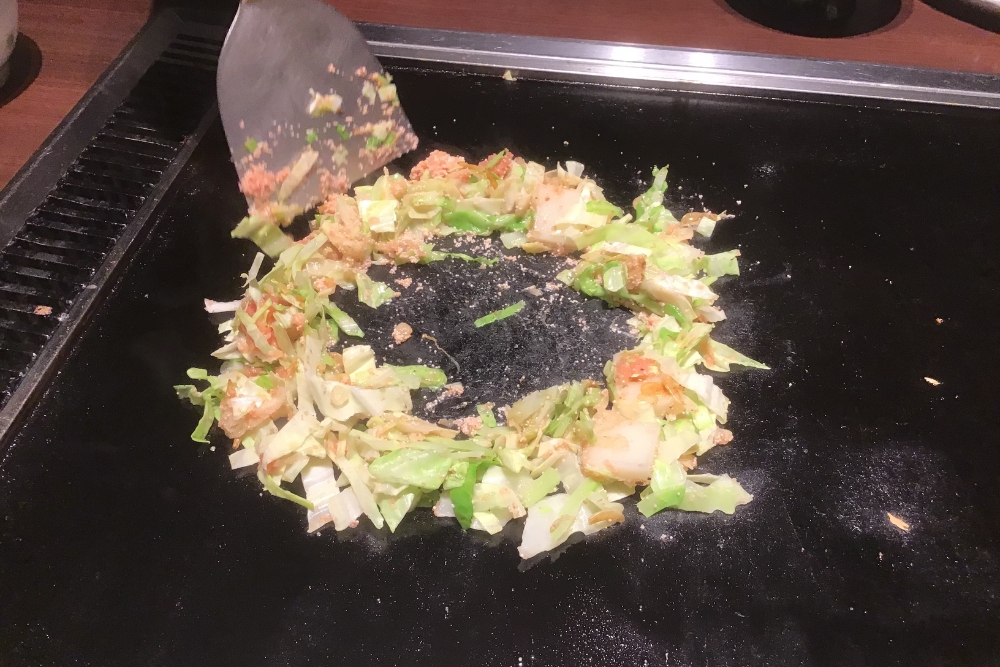
If you’re a food lover looking to explore the best monjayaki restaurants in Tsukishima, here are some top recommendations.
One of the standout restaurants on Tsukishima Monja Street is Okame Hyottoko Ten, known for its delicious monjayaki and lively atmosphere. The restaurant has been serving up mouthwatering monjayaki for over 50 years and has become a favorite among locals and tourists alike. The menu offers a range of options, from traditional flavors to creative combinations that will leave you wanting more.
Another must-visit restaurant in Tsukishima is Kondo Honten, serving monjayaki since 1932. This family-run establishment is known for its warm hospitality and authentic flavors. The menu features a variety of toppings, including fresh seafood, vegetables, and even mochi. The friendly staff will guide you through the cooking process, ensuring that you have a memorable dining experience.
Iroha, established in 1955, is a renowned restaurant with two locations on Monja Street. It stands out as one of Tokyo’s most popular Monjayaki eateries. The restaurant offers a diverse selection of toppings and distinctive menu items, including Yuzu Monja and Curry Monja.
Another restaurant you can try is Kura, a highly favored eatery on Monja Street, which is known for its constant queue of patrons outside. As an idea, choose the Kura Special Monja, packed with a variety of ingredients like shrimp, clams, octopus, crabs, sweetcorn, mochi, and more. With a selection of over 35 toppings for Monja and Okonomiyaki, Kura provides a diverse culinary experience.
How much does it cost a monjayaki?
The cost of a monjayaki varies depending on the location and the specific restaurant. In general, a monjayaki dish can range anywhere from $10 to 20 dollars. However, depending on additional toppings or customization options, the price may be slightly higher or lower. Monjayaki is a popular Japanese dish, particularly in Tokyo, where it is often enjoyed as a casual street food. While the exact cost may differ from place to place, it is generally considered an affordable and delicious option for those looking to try something unique and flavorful from Japanese cuisine.
Conclusion
In conclusion, exploring Tokyo’s iconic Tsukishima Monjayaki Street offers visitors a unique and authentic experience. This bustling street is known for its traditional monjayaki restaurants, where visitors can enjoy delicious and customizable Japanese pancakes. The street’s lively atmosphere, historic charm, and mouthwatering food make it a must-visit destination for anyone interested in Tokyo’s culinary culture.

